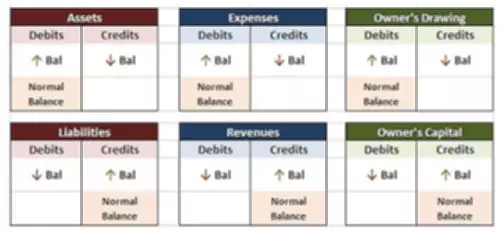Content

For more information on how Sage uses and looks after your personal data and the data protection rights you have, please read our Privacy Policy. ‘Inc.’ in a company name means the business is incorporated, but what does that entail, exactly? Get global corporate cards, ACH and wires, and bill pay in one account that scales with you from launch to IPO. Before Statement of Retained Earnings is created, an Income Statement should have been created first.
Retained earnings are the cumulative net earnings or profit of a company after paying dividends. Retained earnings are the net earnings after dividends that are available for reinvestment back into the company or to pay down debt. Since they represent a company’s remainder of earnings not paid out statement of retained earnings example in dividends, they are often referred to as retained surplus. Traders who look for short-term gains may also prefer dividend payments that offer instant gains. Some factors that will affect the retained earnings balance include expenses, sales revenues, cost of goods sold, depreciation, and more.
Are Retained Earnings Listed on the Income Statement?
For an analyst, the absolute figure of retained earnings during a particular quarter or year may not provide any meaningful insight. Observing it over a period of time (for example, over five years) only indicates the trend of how much money a company is adding to retained earnings. Revenue is the money generated by a company during a period but before operating expenses and overhead costs are deducted.

In the long run, such initiatives may lead to better returns for the company shareholders instead of those gained from dividend payouts. Paying off high-interest debt also may be preferred by both management and shareholders, instead of dividend payments. Retained earnings are also called earnings surplus and represent reserve money, which is available to company management for reinvesting back into the business. When expressed as a percentage of total earnings, it is also called the retention ratio and is equal to (1 – the dividend payout ratio).
How Do You Calculate Retained Earnings on the Balance Sheet?
Alternatively, a large distribution of dividends that exceed the retained earnings balance can cause it to go negative. One way to assess how successful a company is in using retained money is to look at a key factor called retained earnings to market value. It is calculated over a period of time (usually a couple of years) and assesses the change in stock price against the net earnings retained by the company. Retained earnings are the accumulated net earnings of a business’s profits, after accounting for dividends or other distributions paid to investors. You can also use a company’s beginning equity to calculate its net income or loss. So, if you want to know your company’s net income, simply subtract its total liabilities from its total assets.

But not all of the shareholder’s equity is made up of profits that haven’t been distributed. There is also money that investors paid for their stake in the first place. But the company may buy-back some of those shares, which reduces the value of paid-in capital. Any such stock buy-backs might show up as a negative number on the balance sheet in an account called treasury stock. Retained earnings don’t appear on the income statement, also known as a profit and loss statement.
Resources for YourGrowing Business
Conceptually, retained earnings simply represents any surplus of net income that has been held by the business for some future purpose. It is sometimes expressed as a percentage of total earnings, referred to as the “retention ratio”. It is important to note that the retention ratio of a business is also equal to 1 minus the dividend payout ratio. On one hand, high retained earnings could indicate financial strength since it demonstrates a track record of profitability in previous years.
Please do not copy, reproduce, modify, distribute or disburse without express consent from Sage. These articles and related content is provided as a general guidance for informational purposes only. These articles and related content is not a substitute for the guidance of a lawyer (and especially for questions related to GDPR), tax, or compliance professional. When in doubt, please consult your lawyer tax, or compliance professional for counsel. Sage makes no representations or warranties of any kind, express or implied, about the completeness or accuracy of this article and related content. If a business is small or in the early stages of growth, you might think that using retained earnings in this way makes complete sense.
Multiply your net income by the retention rate
That loss, which is a negative profit, would translate to negative retained earnings. Retained earnings are important for businesses because they provide a source of capital for reinvestment and growth. They can be used to finance new projects, purchase new equipment, or expand operations.
- Just like in the statement of retained earnings formula, find the total by adding retained earnings and net income and subtracting dividends.
- If an investor is looking at December’s financial reporting, they’re only seeing December’s net income.
- Retained earnings refer to the historical profits earned by a company, minus any dividends it paid in the past.
- That’s why you must carefully consider how best to use your company’s retained earnings.
- In this example, $7,500 would be paid out as dividends and subtracted from the current total.
- In that case, they’ll look at your stockholders’ equity in order to measure your company’s worth.
- This is a way for companies to reward shareholders for their investment in the company.
- Therefore, a growing balance might indicate little cash returns for investors and might signal that management is inefficiently utilizing retained earnings.

